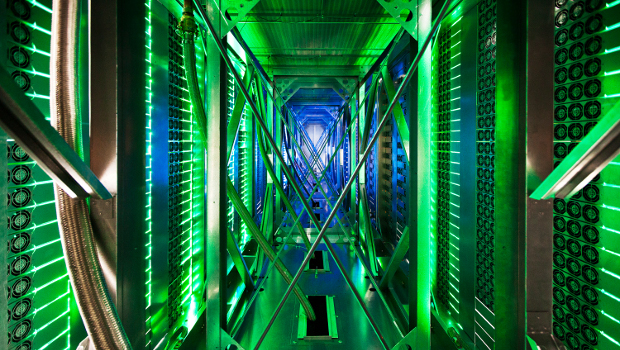The US National Security Agency (NSA) has hacked into Huawei Technologies servers, spied on communications of company executives and collected information to plant so-called backdoors on equipment from the Chinese networking manufacturer, according to recent reports published.
In response, the NSA said that it declines to comment on specific, alleged foreign intelligence activities. In a statement emailed to the IDG News Service, the agency elaborated, saying that “NSA’s activities are focused and specifically deployed against — and only against — valid foreign intelligence targets in response to intelligence requirements.”
Huawei officials were not immediately available for comment.
The latest reports are part of a long-running cyberespionage saga. US officials have contended for years that China’s People’s Liberation Army (PLA) works with manufacturers and hacking groups to spy on US companies and government agencies.
Since last June, documents leaked by former US intelligence contractor Edward Snowden and published by various news organisations have shown that the NSA has conducted its own surveillance campaigns, including programs to hack into equipment from Chinese networking manufacturers. But according to new reports over the weekend from The New York Times and Der Spiegel and based on documents leaked by Snowden, the NSA succeeded in penetrating equipment at Huawei headquarters in a plan to monitor communications on the company’s networking equipment worldwide.
The NSA “pried its way” into Huawei servers at the company’s headquarters in Shenzhen, China, according to an online report in The New York Times.
The operation, code-named “Shotgiant,” was to try to establish long-suspected links between Huawei and the PLA, and also to plant backdoors on Huawei equipment sold worldwide, according to the Times.
Among the information cited by newspaper was a 2010 document detailing Shotgiant operations. However, covert operations against Huawei go as far back as 2007, The New York Times report said. The NSA also monitored communications of Huawei executives, the report said.
One goal of Shotgiant was to place backdoors on Huawei technology in order to monitor communications on network equipment acquired by the company’s customers, which include US allies and adversaries, according to the report.
The report in the Times does not specify how successful this was, since technical details of the operation were withheld from publication at the request of the US government, according to the newspaper.
The NSA is taking pains to distinguish its surveillance activities from those of China. US government and business officials claim Chinese spying activities are intended, among other things, to gain commercial advantage over the US
“We do not use foreign intelligence capabilities to steal the trade secrets of foreign companies on behalf of — or give intelligence we collect to — US companies to enhance their international competitiveness or increase their bottom line,” the NSA said in an emailed statement Sunday.
“It is important to note the overlay of law, regulation, policy, procedure, technical safeguards, training, culture, and ethos in the use of such tools; all of these things govern how NSA deploys various foreign intelligence techniques to help defend the nation,” the NSA said.
The latest reports of the NSA’s spying on Huawei follow earlier news stories about efforts to place backdoors on equipment from the company.
In December last year, Der Spiegel published a report outlining how the NSA intercepts deliveries of new computer equipment en route to plant spyware. The operation was conducted by the NSA’s Office of Tailored Access Operations (TAO), which specialises in infiltrating computers, according to the report.
The newest reports this weekend say that the TAO unit by 2010 gained access to Huawei headquarters and was able to collect communications from Ren Zhengfei, the company’s founder.
The Times story, however, pointed out that none of the documents leaked by Snowden show that NSA operations proved a specific link between Huawei and the PLA.
US government officials for years have suspected that Chinese networking companies have worked with the PLA. For example, a congressional committee concluded an inquiry in 2012 with members still in doubt about the security of networking equipment from Huawei and ZTE.
The US government has also blocked efforts by Huawei to expand its business in the country. In September 2011, for example, the US Department of Commerce said it had told Huawei that the company was barred from participating in a project to build a national wireless network.
Last October, Huawei issued a company report on cybersecurity in which it suggested ways companies could work together internationally to secure networks from hacking.
“We can confirm that we have never been asked to provide access to our technology, or provide any data or information on any citizen or organisation to any Government, or their agencies,” Huawei deputy chairman Ken Hu said in the report.
In an online article on Saturday, 22 March, The New York Times quoted William Plummer, a US-based Huawei executive, as saying: “If such espionage has been truly conducted then it is known that the company is independent and has no unusual ties to any government, and that knowledge should be relayed publicly to put an end to an era of mis- and disinformation.”
In addition to selling networking equipment, Huwaei is also the third-largest vendor of smartphones in the world. However, as recently as Mobile World Congress last month, a Huwaei official confirmed that the company has essentially given up on the network infrastructure business in the US, which makes efforts to sell mobile devices in the country more difficult.
Marc Ferranti, IDG News Service








Subscribers 0
Fans 0
Followers 0
Followers